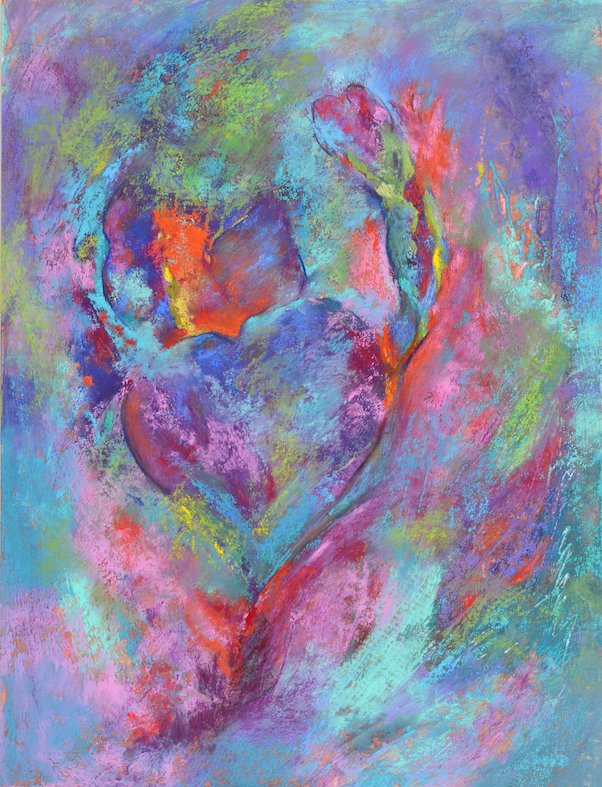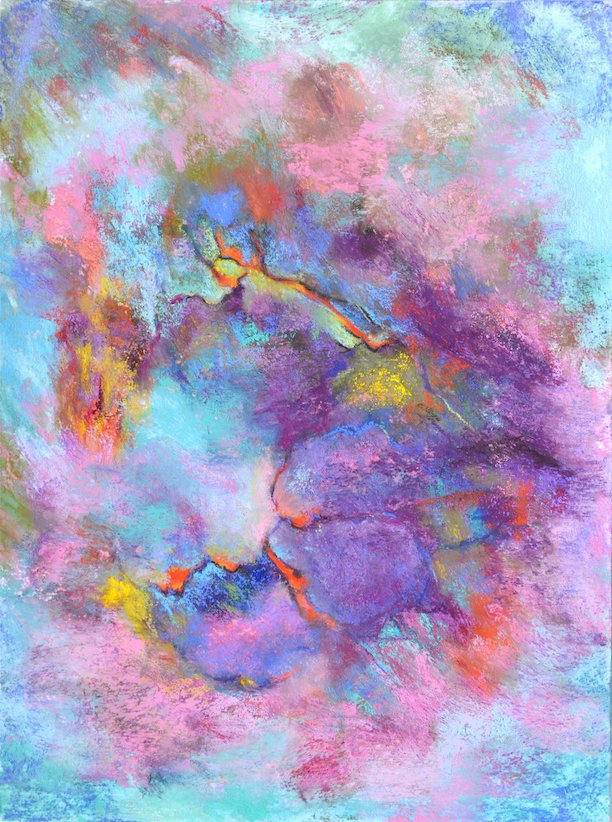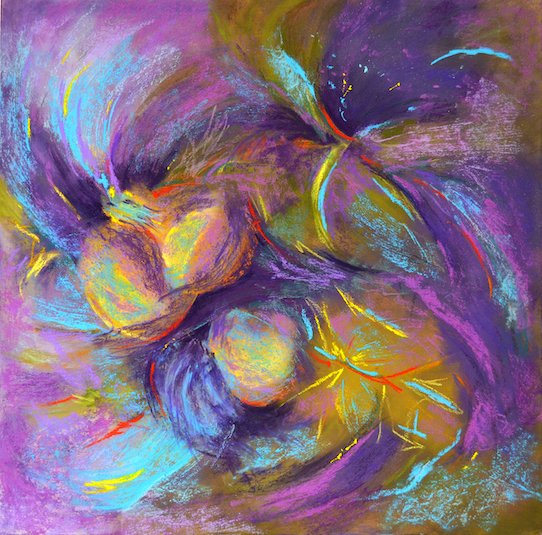Interview with artist Shirley Anderson
Shirley Anderson is an artist who has spent much of her life in Arkansas. After a career as a project manager in New Jersey, Shirley and her husband retired to Hot Springs Village, Arkansas. Shirley is primarily known for her vibrant pastels. She is a Charter Member of the Arkansas Pastel Society and is a member of the Board of Directors for the International Association of Pastel Societies. More of Shirley’s work can be seen at Art Group Gallery in Little Rock and at her website shirleyandersonart.com.
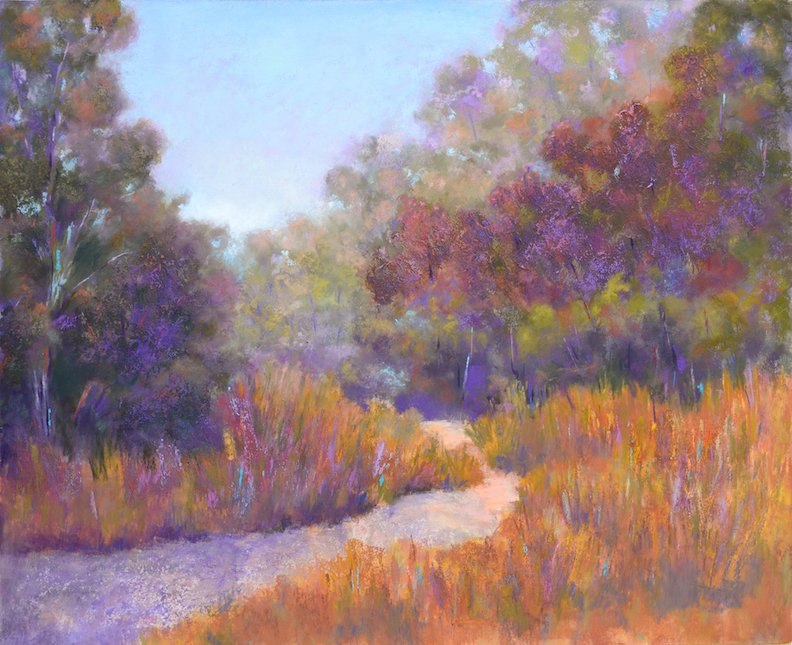
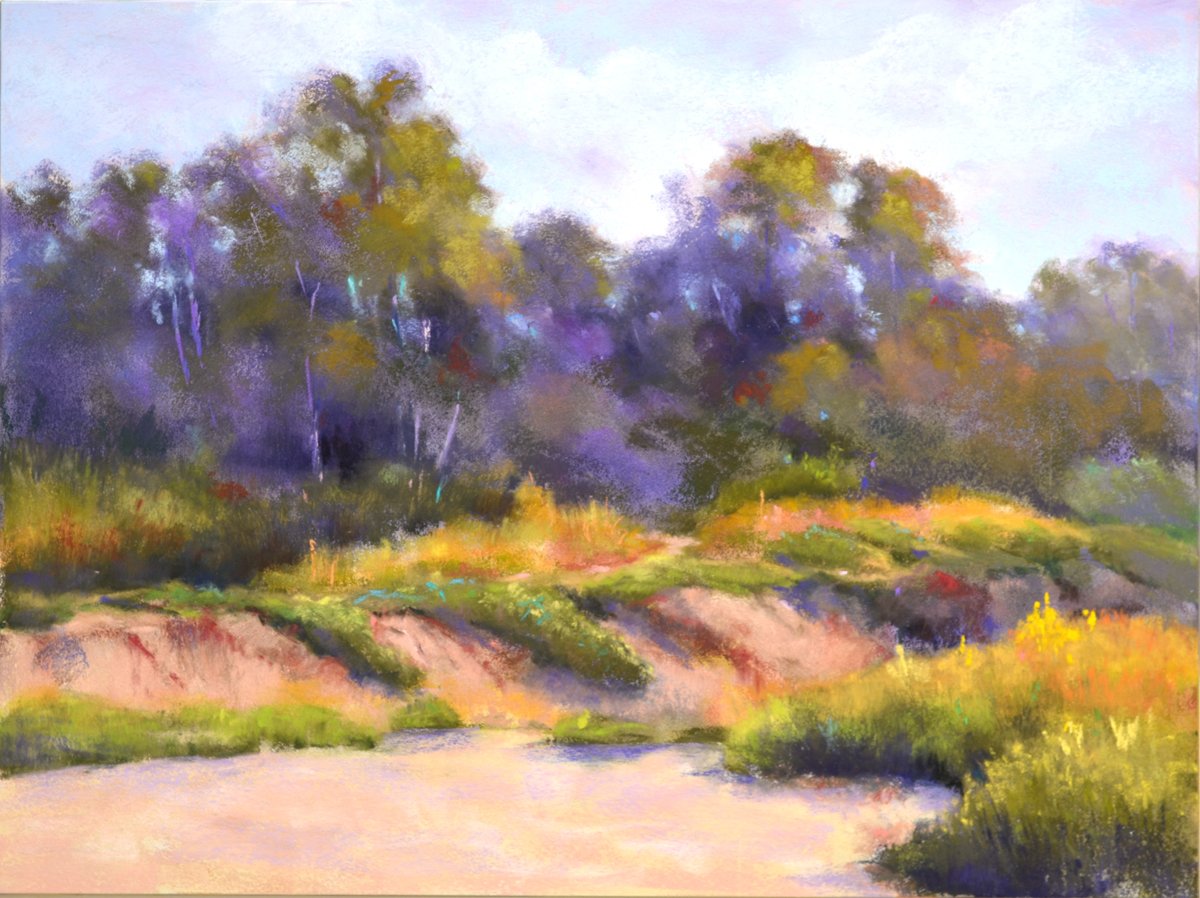
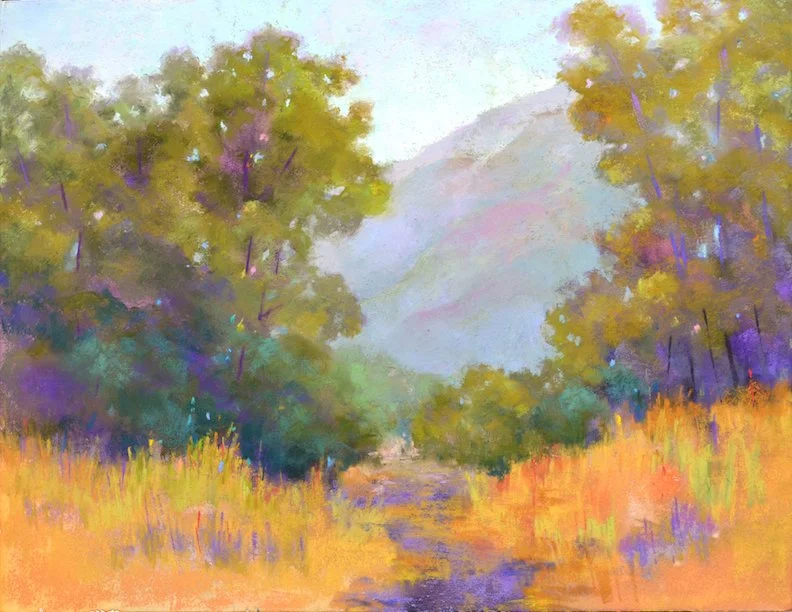
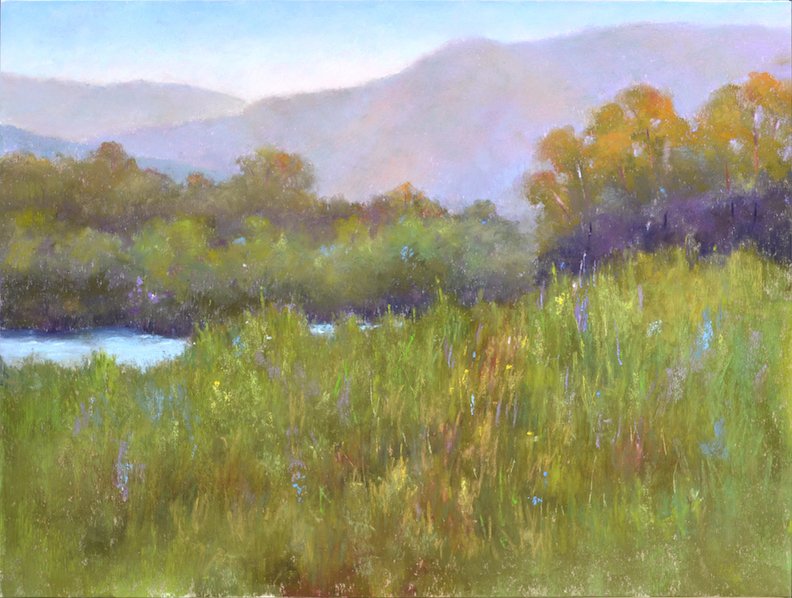
AAS: Shirley, please accept my condolences on the recent death of your husband.
SA: Thank you, Philp. My husband was one of my biggest supporters. Not only did he do my framing for me, but he also traveled with me to various workshops and painting excursions. He was my Sherpa on trips to California, Spain, and France.
AAS: Where did you grow up?
SA: I was born and raised in Texas but moved to Arkansas for my high school and college days. I was working in a Pharmaceutical Manufacturing Company in Shreveport, LA, when I met my husband. We were eventually transferred to New Jersey but decided to retire in Hot Springs Village for several reasons.
My educational background was not at all related to art. I have a degree in chemistry and math plus an MBA. My first job out of college was at a Crime Lab as a drug chemist, then to the drug manufacturing company and finally to a telecommunications company headquartered in New Jersey. At one time I had responsibility for organizations in France, Belgium, Great Britain, the Caribbean, and Australia. At the end of my career in New Jersey, I was a Senior Project Manager.
AAS: I understand you took up drawing and painting relatively later in life. But was art something you did as a child?
SA: I didn’t really get involved with art until I was in New Jersey although I had always loved art. My husband and I both traveled for work, and we traveled together for pleasure. One of the things we did was collect art from the countries and cities we visited. We called that our souvenirs collecting.
I did draw and doodle a little when I was in high school, but at that time (way back then) teachers told me that I needed to pick a career path. I was good at science and math, so I was “encouraged” to take that path. But I was told I definitely could not do both. That’s the part I regret. And now when I teach, I stress the fact that you can do both.
When we were living in New Jersey – a very different culture for this Southern girl – I was stressed by the traffic and all the travel I was doing so I decided to take art lessons on Saturday morning with little ten-year olds. I loved it. I could lose track of time and had fun because there was no pressure. When I was given the chance to retire with my pension, I took the opportunity and have been doing art ever since.
I did feel like I had to play catch up because there are so many good artists who have studied all their lives. I started out taking a few classes and then workshops once I settled on pastels.
AAS: Shirley, your pastel landscapes are wonderful. They are representational but with a magical interpretation. Tell me about Sunny Morning. Was it done on site?
Sunny Morning, 16” x 12”, soft pastel on sanded paper
SA: I started Sunny Morning on site by doing a quick plein air study, but I finished the painting in my studio. This is a scene from a park in Goleta, California. It is a beautiful park with many places to set up painting equipment next to the path. I went out early in the morning the day before the workshop started to get photos, so I knew what I wanted to paint during the workshop. The problem is there are always so many places you want to paint while you are outside it is sometimes easier to do a study outside and finish the piece in the studio.
AAS: Golden Meadow is one of my favorites. I love the way you use a variety of ‘strokes’ – sorry I don’t know the correct terminology for application of pastel – to vary the texture and overall look.
Golden Meadow, 11” x 14”, soft pastel on sanded paper
SA: The word strokes is a very appropriate term to describe the pastel painting process. Applying pastel to paper is a very tactile process because when the pure pastel is applied no brush is involved. The artist holds the pastel in their fingers to deposit the pastel on the paper. There is a huge debate in the art community as to whether pastel paintings are drawings or paintings. Some people hold to the definition that if the pastel covers the entire paper (substrate) then it is a painting. Otherwise, it is a drawing. But some of the well-known museums simply call pastels “works done on paper”. Many of the older pastel works were done on paper that was “laid down” on a canvas surface.
But back to your question about Golden Meadow, I not only used several different types of strokes, but I also used a technique called underpainting. I have a very light touch in applying the pastel to the sanded paper, so I often use various products to create a thin underpainting before I apply the final layers of pastel. In Golden Meadow, I used Pan Pastels (Pan Pastels are a brand name of pastels that come as a small pan of pure pigment with very little binder rather than compressed into a stick.) to create an underpainting and then I used pastel sticks to apply the different strokes. The look of three-dimensional impasto-like strokes is produced by lightly dragging a soft pastel over texture created by applying clear gesso to the paper before beginning the pastel painting.
AAS: River Bed Light is another terrific piece. It is an enchanting scene.
River Bed Light, 12” x 16”, soft pastel on sanded paper
SA: The scene depicted in River Bed Light is from a creek in Hot Springs Village, Arkansas. I used two reference photos that I took to create the painting, and it was done entirely in my studio. It took me several attempts to arrive at the finished painting.
You probably have noted that most of my paintings have violet or purple and blue. In River BedLight I wanted to create the scene with as much purple as I could to create that enchanting evening feel.
AAS: Tell me about the Arkansas Pastel Society and your involvement with the International Society of Pastel Societies.
SA: The Arkansas Pastel Society was formed in 2004 by a small group of devoted pastelists who saw the need for a pastel society in Central Arkansas. I was one of the Charter Members and have served in most of the Officer positions. It is a great group of artists who enjoy networking with other pastel artists. We sponsor at least one workshop each year and host a National Juried Pastel Exhibition in the odd-numbered years. In addition to the what we offer individual artists like education, opportunity to display their works, and information on new techniques and products, one of our main goals is to educate the public to the beauty and versatility of the pastel medium.
The International Association of Pastel Societies (IAPS) is (of course by the name) an international non-profit organization serving pastel societies from around the globe. I was elected to the Board of Directors in 2017 and have served as the Exhibition Chair since that time. I am currently serving as the Vice President of the Executive Committee. IAPS hosts a convention every other year involving demonstrations and workshops by internationally known artists, social events for networking and a wonderful trade show for pastel products. We sponsor two exhibitions each year – one in the spring and one in the fall.
AAS: Escape received special recognition by the International Society of Pastel Societies. Tell me about that piece.
Escape, 14” x 11”, soft pastel on sanded paper
SA: Escape was one of my first abstract pieces. I created it from one of my photographs of Costa Rican palm trees. In this case, I also created an underpainting, but unlike the previously described underpainting, I used hard pastels and water to give the painting a “drippy, ethereal” atmosphere.
Escape won an Award of Merit in the 2022 Juried IAPS Web Exhibition – the 41st Open Division. The artwork that is included must be accepted by a panel of jurors. For the 2022 Open Division, 622 artists submitted over 1700 paintings and 150 were accepted. Only eight awards are given in the Open Division. The Judge of Awards was Professor Anseok Cho of Korea. I was extremely thrilled and honored to have received one of the awards.
AAS: So, let’s talk more about your abstract works. The first is Angel Wings. Your application of pastel, here again, adds to its depth and texture. Was that image in your head before you started?
Angel Wings, 14” x 11”, soft pastel on sanded paper
SA: That image was not in my head when I started the painting. In fact, I made significant changes to the painting several times before settling on the final version. When I started working in abstract, I had several paintings that I discarded because they did not meet what I had in mind for the painting.
The first acceptable abstracts (what I termed acceptable to me) were based on flowers. Angel Wings started as a closeup photo of a peony, but after I reworked the painting, I saw shapes forming like wings and like a net. I use clear gesso to give my paintings texture. I apply the softer pastel over the texture created by the clear gesso or in some cases apply the pastel over mesh or stencils to produce the 3-dimensional look.
AAS: I know you also work in oil, acrylic and charcoal. But is pastel your favorite medium?
SA: Definitely pastel is my favorite medium. I like the tactile feel of the pastel. For me, the pure pigment in pastel can create a luminosity and vivid quality that is harder to create with any other medium. The pure pigment has a crystalline structure that reflects light and thus the luminosity. With pastels I can work on a piece and if the telephone rings or I am interrupted, I can put the stick down and walk away. I don’t have to wash brushes or worry that it will dry differently. It will always be exactly the way I left it when I return to the painting.
Having said that I will tell you that I use oils and watercolors to create some of my underpaintings for my pastels. Oil paints are actually my favorite underpainting medium for pastels. I always use museum glass to frame my pastels to reduce the reflections.
I do portraits of people and pets with oils and have used acrylics to create commissions on a larger scale. The one drawback with pastels is that they must be framed under glass, and for large commission pieces, pastel paintings can become quite heavy.
AAS: Shirley, do you see your practice changing any in the next five years? Is there anything you haven’t explored before that you want to try?
SA: As we have discussed, my work has changed from calm, serene landscapes to abstracts. There is a reason for that. When I started painting, it was so I could create something calm and beautiful from nature. That is the reason I love plein air painting – I am in nature with beauty surrounding me.
When Covid hit, the environment changed for me. I lost a daughter-in-law to Covid. I saw the effect it had on my son. The first two “acceptable” abstracts were painted at that time, and the paintings just happened – Hearts Aflame and Broken Heart [see below]. Then my husband started having health issues, and I was taking care of him. My abstracts got a little wilder. Painting like any art form is a deep expression of things going on around you. I do think that my paintings will go back to the calm serene landscapes or, if abstracts, then not so frenzied. I tell people that I envision a solo exhibit entitled “From Calm to Chaos and Back”.
But I also have other things to try. In every workshop I take, I learn new techniques and find new products. I will always continue changing my paintings through the use of new experiments – remember, I am a chemist.
I give my mentor, Richard McKinley, credit for that attitude, also. He encourages his students to keep learning, to keep changing, and to keep painting! I have a great place to show my work at the Art Group Gallery. The partners in the Art Group Gallery are all so supportive of me. So, I keep painting!
